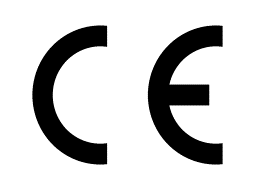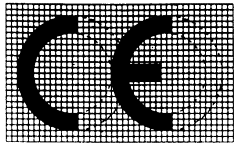 General General
One
of the main aims for the European Union is to move to a single market,
without trade barriers. Products complying with essential requirements
concerning safety, health and environment, are permitted on that market
without restrictions.
Products
that comply with the essential requirements shall be provided with the
CE marking by the manufacturer. Products with the CE marking have free
access to all member states.
The
member states of the European Union (EU) and of Iceland, Lichtenstein
and Norway cooperate on this in the "European Economical Area -
EEA" and are implementing EU-Directives in their laws. The
EU-Directives are based on the principles of the "New
Approach" and the "Global Approach".
New Approach
The
basic principles of this approach are:
-
obligations
are limited to essential requirements concerning safety,
health and environment; the wording chosen for these requirements is
extremely general and suitable for flexible interpretation,
-
special
bodies are charged with the issue of harmonized standards
with technical requirements; the standards are based on
international standards and specify in detail how essential
requirements can be complied with,
-
products
which comply with harmonized standards are assumed to comply
with the essential requirements,
-
the
use of harmonized standards is voluntary; the standards
specify one way of compliance with the essential requirements, there
may be alternative ways; manufacturers may use alternative ways to
demonstrate compliance with essential requirements.
Global
Approach
Conformity
assessment procedures are harmonized into a modular scheme (see page 3)
specifying obligations for Manufacturers and Notified Bodies.
Modules A to H apply, depending on the directive(s) and the type of
product in question.
Individual
directives do not refer to the modular scheme directly but contain a
specification of the applicable conformity assessment procedures.
Usually the modules can be clearly recognized.
The
scheme is set up in order to reduce the involvement of public
authorities in the procedures for verification of compliance with the
requirements. With products where this is considered unavoidable, due to
the related risks, a Notified Body must be involved.
The
role of the public authorities in the member states is limited to
market-surveillance and surveillance of the activities of Notified
Bodies. The market-surveillance consists of removal of products
without the CE marking, and random control of products with the CE
marking. In case of accidents the public authorities are always
involved.
Manufacturers
Obligations
The
conformity assessment modules specify the manufacturers obligations in
the design- and production-stage of the products with the CE marking.
The responsibility for observing all these obligations lies with the
party that actually enters the market with the product(s).
Manufacturers
outside EU- and EFTA- countries will need an importer, in one of the
EU-countries, prepared to bear the responsibilities. An importer will
only be prepared to take on these responsibilities, if the manufacturer
can convince him, and provide evidence, that all requirements are
complied with.
Importers
without any influence on the design or production of the products, will
request that Technical Construction Files and Declarations of Conformity
are drawn up by the actual manufacturer and that the quality system that
generates these documents is reliable.
In
the case of a unique product, for one customer only, there may not be an
intermediate importer. The customer then bears similar responsibilities
as the importer. Direct customers and importers with responsibilities
concerning CE marking shall be legal entities or persons within one of
the EU- or EFTA-member-state countries.
All
modules require that manufacturers prepare:
-
technical
construction files, that contain evidence that the designs of
the constructions comply with the essential requirements,
-
declarations
of conformity, for each individual produced product with the CE
marking, stating that the product is in accordance with the
technical construction file.
Separate
information leaflets are available for Technical Construction Files and
Declarations of Conformity.
CE marking
The
CE marking consists of the letters C and E, for "Conformité Européenne",
with dimensions, and shaped, in accordance with the relevant directive.
The
letter-height shall be at least 5mm and the dimensions shall be as
pictured in the following figure. The marking shall appear near the name
of the manufacturer and the type- and series-designation of the product.
The marking shall be clearly legible and indelible.
 Adjacent to the CE marking, the assignment-number of the Notified
Body shall be indicated if the Notified Body was mandatorily involved in
the conformity assessment procedure in the production phase.
Adjacent to the CE marking, the assignment-number of the Notified
Body shall be indicated if the Notified Body was mandatorily involved in
the conformity assessment procedure in the production phase.
The
actual meaning of the CE marking is: a declaration of the manufacturer,
that the product complies with the essential requirements of applicable
EU-Directives.
As
such, the CE marking is not equivalent with traditional certification
marks:
-
the
CE marking does not indicate whether, or which, standards were used
to demonstrate compliance with essential requirements,
-
the
activities of manufacturers are not regularly monitored in case the
directives do not require the intervention of a Notified Body in the
production stage.
Products and
Directives
Many
products may be covered by only one single EU-directive, or may fall
under the scope of more than one directive. It is therefore important to
know the scope of each of the directives, because the essential
requirements of all applicable directives must be complied with.
Unique
components of electrical equipment, without any other application, need
not be provided with the CE marking; the marking shall appear on the
appliance with that component. For components for general use (e.g. wire
and cable, switches, thermostats, etc.) it is advised to follow the CE
marking procedures.
Notified
Body
The
safety risk associated with certain product-types can be such that an
independent body must be involved in the conformity assessment
procedures. Each member-state notifies the European Union about suitable
bodies, within its own territory: "Notified Bodies". Certain
directives indicate similar bodies as "Designated Laboratory"
or "Competent Body".
Assignments
to Notified Body can be obtained only by institutes that demonstrate
reliability, independence and professional knowledge.
Although
Module A does not require the involvement of a Notified Body,
manufacturers may still wish to use the test-equipment, the experience
of the engineers and the independence of judgement of a Notified Body.
Technical Construction Files and Declarations of Conformity which are
supported by a Notified Body will be of value in case of a dispute.
Harmonized
technical standards
The
following bodies are charged with the harmonization and issue of
technical standards:
-
ETSI,
for telecommunication equipment
-
CENELEC,
for electrical equipment, excluding telecommunication equipment,
-
CEN,
for all equipment, excluding electrical equipment.
Standards
are issued as EN-standards and published in official journals. Whenever
possible EN-standards are based on ISO- or IEC-standards.
The
standardization-bodies coordinate and administrate the work of technical
committees for individual standards. Committee-members are
representatives of standardization-institutes of member-states,
certification institutes, consumers and industry.
CEBEC
CEBEC
provides CE-services through an international network of independent
certification offices. CEBEC holds relevant assignments for the
following Directives:
The
assignment-number of CEBEC as a Notified Body is: 0649

Information
For
further information please contact:
CEBEC
Avenue. Fr. Van Kalken 9A, b. 1
B-1070 Brussels (Belgium)
Phone: +32 2 556 00 20
Fax: +32 2 556 00 36
CEBEC provides market access
|


